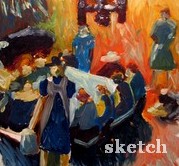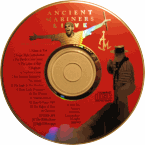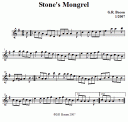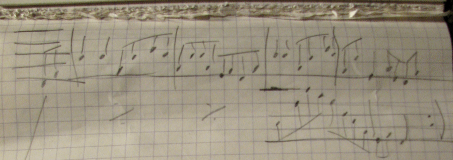
Screaming Wretch
In the mid 90’s I went to New York for the Millbrook Muster. After a lovely day of traditional fife and drum we imbibed a few cocktails and enjoyed each others company as we played tunes around the campsite. As the night covered us in stars our fifing had moved from the traditional jigs, reels and hornpipes into the more exploratory realm of what we called ‘Space’.

Space usually involved a half-dozen fifers playing, without any predefined structure or direction, in an attempt to spontaneously create atonal music. From the outside I suspect it was fairly offensive. But being in the center of it was intriguing. Like an ant colony, it initially appears unorganized, but after a bit of observation, a strange sense of organization emerges. Musicians would react to what the other musicians were doing and the Space would take on a musical dialog of its own. Without a map the participants would begin to gain an intuitive sense of where things were going like ants finding their way to food. Fascinating.
Well, the woman who was trying to sleep with her newborn a few tents over did not find Space to be nearly as interesting as we did and, with a fair amount of energy, she let us know. In an attempt to be considerate we put the fifes away and, instead, decided to continue our musical explorations through group humming. Ironically, this ‘Hum Jam’ attracted quite a crowd and before we knew it we had a dozen or more participants with as many onlookers. It was all very organic and quite exciting. But, once again, our lady-with-a-baby was unable to see the brilliance in the musical and communal phenomena that was unfolding before her. And with more energy than before, she leathered into us with an ear popping, shrill harangue that rivaled any atonal noise we could have possibly produced with fifes. She really killed the mood.
I went home, once the weekend was over, with a spiteful vengeance toward that screaming wretch who ruined our Space, which is ironic since I’m actually a reasonably nice guy. The next day, in a moment of catharsis I wrote this tune.
In a nod to Space, I wanted to write a tune that sounded somewhat random and, originally, left the last note of the tune up for interpretation by the performer. My recording of Screaming Wretch, primarily on bouzouki and tenor banjo, is very incomplete as you will hear instruments drop the second time through. But, I wanted to post it because Plùc is looking for some new material and the best way to learn this tune is to listen to it…repeatedly. Also, you will notice, upon close inspection, that I am playing this slightly differently than how I originally wrote it. This is due to a combination of me softening a few spots, now that the years have soothed my aggravations, along with my fading memory of every accidental that I wrote in.
So, to the lady-with-a-baby: Thanks. This tune would have never been written without all your bitching. Second, I hope you can accept my belated apology for ruining your good nights sleep.
Screaming Wretch by baconworks













